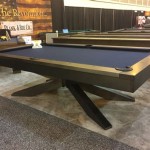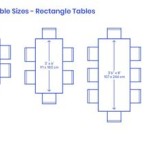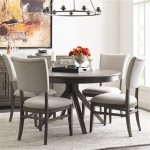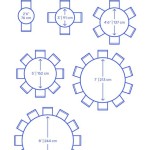Light Over Dining Room Table: Illuminating Your Dinner Experience
The dining room table is a focal point for gathering, conversation, and shared meals. Adequate and well-placed lighting can significantly enhance the ambiance and functionality of this space. Light over the dining room table plays a crucial role in creating an inviting and comfortable atmosphere that complements the dining experience. This article explores the various aspects of lighting design for dining room tables, including the types of lighting, factors to consider, and practical tips for achieving the perfect illumination.
Types of Lighting for Dining Room Tables
Choosing the right type of lighting for your dining room table depends on the desired ambiance, the size and style of the room, and the existing décor. Common options include:
- Pendant Lights: Often a stylish and practical choice, pendant lights hang from the ceiling and provide direct illumination over the table. They come in various shapes, sizes, and materials, allowing for customization to match the room's aesthetic.
- Chandeliers: For a more dramatic and elegant effect, chandeliers are grand fixtures typically suspended from the ceiling and featuring multiple light sources. They are ideal for adding a touch of sophistication and grandeur to the dining space.
- Flush Mount Lights: Flush mount lights sit close to the ceiling and provide a clean, minimalist look. They are particularly suitable for rooms with lower ceilings or when a less prominent lighting fixture is desired.
- Recessed Lighting: Recessed lights are installed in the ceiling and offer a discreet and functional option for general illumination. They can be combined with other lighting fixtures to provide layered lighting for a balanced effect.
Factors to Consider for Dining Table Lighting
Beyond the choice of lighting fixture, several factors influence the overall success of lighting over a dining room table. These include:
1. Room Size and Ceiling Height
The size of the room and the height of the ceiling impact the appropriate size and placement of the lighting fixture. In a larger room with high ceilings, a larger chandelier or statement pendant light will be more effective. For smaller rooms with lower ceilings, a flush mount light or a smaller pendant light may be more suitable.
2. Desired Ambiance
The desired ambiance for the dining room table greatly influences the lighting design. For a warm and inviting atmosphere, consider softer light sources such as warm white LEDs or incandescent bulbs. For a more modern and contemporary feel, cooler white LEDs might be preferred. The color temperature of the light source can have a significant impact on the overall mood and tone of the room.
3. Task Lighting
While ambiance is important, adequate task lighting for reading menus or engaging in activities at the table is also essential. This can be achieved by incorporating additional light sources like a small lamp on the table or by choosing a fixture with adjustable light settings. Layered lighting, using a combination of ambient and task lights, is often the most effective approach.
Tips for Achieving Perfect Dining Table Lighting
Here are some specific tips to ensure optimal lighting over your dining room table:
- Placement: If using a pendant light or chandelier, position it directly over the center of the table. The fixture should be hung at a height that provides ample light without obstructing the view or causing glare. As a general guideline, the bottom of the fixture should be about 30 to 36 inches above the tabletop.
- Dimmers: Incorporate dimmers to regulate the intensity of the light source, allowing for flexibility in creating different moods. This is particularly useful during evening meals or when creating a more intimate setting.
- Avoid Glare: Choose light bulbs with a matte finish or use diffusers to prevent glare and harsh lighting that can strain the eyes. Ensure the light source does not directly shine into the eyes of anyone seated at the table.
- Layered Lighting: Consider using a combination of different lighting types to create a balanced and layered approach. This can involve adding sconces on the wall, recessed lights in the ceiling, or a small lamp on the side table to provide both ambient and task lighting.
- Reflectors: Enhance the overall brightness of the space by using reflective surfaces. White or light-colored walls and ceilings will reflect light more effectively than darker colors, brightening the dining room.
By carefully selecting the right type of lighting, considering the factors mentioned above, and following these helpful tips, you can create a dining room table that is both functional and visually appealing. The right light can transform your dining space into a welcoming and memorable gathering place for family and friends.

Dining Room Lighting Ideas And Inspiration From The Interior Design

Dining Room Light Fixtures Guide Color Cord Company

290 Best Dining Room Lighting Ideas In 2024

How To Choose The Perfect Dining Room Light Fixture Graham S Living

How To Hang A Chandelier At The Perfect Height Over Dining Table Mod Lighting

5 Over Dining Table Lighting Ideas Dowsing Reynolds

Best Dining Table Pendant Light Height Lighthouse Lane

Small Dining Room Big Impact 25 Lighting Ideas Lightopia
How To Choose The Right Pendant Lights For Over Dining Table Melanie Lissack Interiors

Top 40 Dining Room Lighting Ideas With Examples Froy Com








